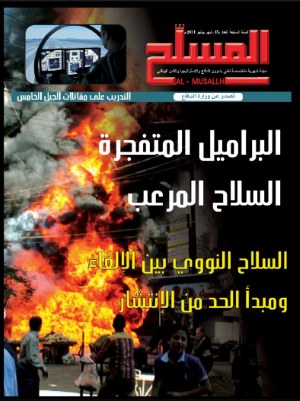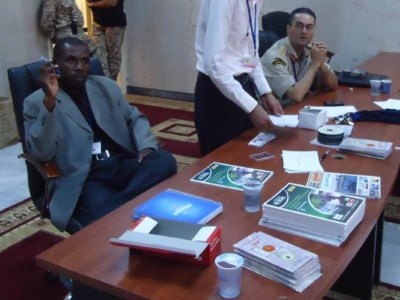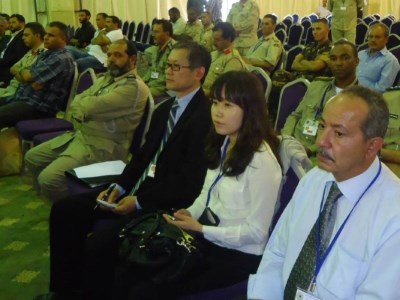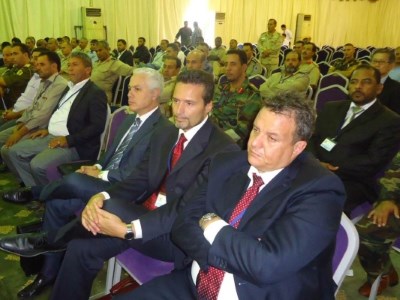Iran carried out a major military attack on Israel on Saturday night, with ballistic missile units, cruise missiles, and suicide marches, in response to an Israeli strike that targeted an Iranian diplomatic headquarters in Damascus a few days ago
killing prominent officers in the Revolutionary Guard. The Iranian response was announced 72 hours before its implementation, and neighboring countries and the United States were notified and Turkey do so, even though this is unprecedented and inconsistent with the usual rules of secrecy during planning military operations. Hence, questions begin about the Iranian response. Was it a carefully planned military operation or was it a political maneuver of which this operation was a part?
According to available information, the Iranian Revolutionary Guard began the operation by launching about 300 drones of various types and dozens of cruise missiles and ballistic missiles. These means will cover an air distance of up to about 1,585 km, and the marches will take several hours (about 7 hours) to reach their targets inside Israel, and a number of them have been seen. In the skies of several Iraqi cities as it headed west, in response, Israel activated its air defenses and waited for its arrival to succeed in intercepting most of these air threats.

The whole thing seemed like an advanced training for Iran's capabilities to implement, with its missile arsenal and modern drones, and also for Israel's capabilities to confront the threat, which possesses modern weapons capable of confronting such attacks with great accuracy, especially since the information was widely available and available to everyone, and this undoubtedly contributed. In reducing the effectiveness of the strike, especially since Israel and the United States are equipped with weapons capable of carrying out interception operations even outside the atmosphere, such as the Hertz 3 or Strela 3 interceptor missiles, as it is also known, or the SM-3 interceptor of the US Navy, as well as the Iron Dome and David’s Sling systems on which they rely. Israel to a large extent
Some countries also contributed to tracking and shooting down Iranian media during their journey to reach Israel. Some interceptions of Iranian ballistic missiles took place outside the Earth’s atmosphere at an altitude of approximately 100 kilometers above sea level, a border known as the Karman Line, and any interception that occurs outside these borders is considered outside the atmosphere. It is known that after launch, ballistic missiles follow a path that takes them outside the Earth’s atmosphere. This is known as the stage of the missile’s path towards the target. During this stage, an attempt is usually made to intercept it and destroy it while it is in space before it has the opportunity to reach its target
Intercepting missiles in the outer atmosphere involves a complex series of events that begin with detecting the incoming target missile via radars or satellites and then determining its location in space. A missile is then launched to intercept it and collide with it in space, guided by data from ground-based radars or on-board sensors, and requires interception has precise calculations and timing so that the interceptor missile matches the speed, path and height of the incoming missile until it collides with it. Given the high speeds at which both the interceptor and the incoming missile move, it is considered a precise mission and is often similar to a bullet hitting another bullet.

The absence of the element of surprise, and the operation was reported in advance, and announced as if it were an artistic celebration or an economic event with a specific time, helped in calculating the arrival time of the marches, which was sufficient for preparation and activation. Israeli air defense units used their various weapons to intercept the Iranian combat vehicles carrying out the attack, and this is what happened, as the Israelis announced that they succeeded in intercepting 99% of the Iranian attack means, including ballistic missiles and drones, although some of them and the Iranian missiles and drones were able to reach their targets, specifically Ramon Air Base in the Negev Desert..
Later, the US Central Command (CENTCOM) announced that the United States, with the support of European destroyers, supported and contributed to the seizure and destruction of more than 80 drones and at least 6 ballistic missiles during the Iranian attack, and the presence of two American ships. Six missiles were destroyed in the area, namely the destroyer USS Arleigh Burke and USS Carney, before fighter jets intervened and in turn destroyed more than 70 Iranian drones. A Patriot cruise missile battery, not far from the Iraqi city of Erbil in Iraq, also contributed to shooting down Iranian missiles.

Israel harnesses enormous technical capabilities to strengthen its defenses. It is enough to know that its Ofoq 13 satellite orbits around the surface of the Earth once every 90 minutes, and moves on a path that passes over Syria and Iran. Therefore, it sees and transmits all Iranian movements in real time. Therefore, it is not surprising that Israel intercepts the Iranian attack and falls according to Its data on a total of 99% of its media outlets, although they are unconfirmed estimates, appears to be greatly exaggerated, and this means that the attack failed to achieve its goals, while Iran considers its operation a success and declares that it does not wish to escalate its hostilities against Israel, and this situation puts before us many questions. The most important questions are: Did the Iranian attack really succeed militarily against Israel?
The success of military operations depends on many factors, the most important of which is the good selection of targets, as well as the condition of the state and the enemy, the state’s military capabilities, the extent of the ability to respond, and above all, the information available to it about the enemy and predictions of what might happen as direct results of the operation. Did Iran take all of these factors into consideration when planning to implement Or is the attack a quick reaction with uncalculated results? The latter may show major negative results and give an undesirable impression to the countries of the world, and it may lead to new challenges that they do not need to raise.

In practice, the Iranian attack did not have the data for success before it began. The prior announcement of it and the absence of the principles of secrecy and surprise had a significant impact on its success. Many observers and analysts consider it a representative maneuver to save face and gain the sympathy of the Iranian people and an attempt to emotionally influence Arabs and Muslims who are eager to carry out similar strikes against the enemy. The Zionist, especially after its recent retaliatory operations in the Palestinian Gaza Strip.
However, simply entering into the operation is an achievement worthy of attention, especially after the spread of scenes of fear and terror and the stampede towards shelters in Israel. Perhaps the most influential thing is that they was realize that they are not safe, and this matter dampens their morale, especially after the success of the Hamas last October operation, with the actual arrival and fall of some missiles and kamikaze marches. it was make it reconsider its calculations and preparations. In this regard, Israel used a billion dollars' worth of air defense supplies to defend itself from Iran on the night of the attack. This is a burdensome matter for its budget, especially if the attacks continue, and Which was it is overall one of the positive results of the timid Iranian attack.
It is certain that Iranian leaders have multiple options to carry out the attack, such as carrying out a "missile dumping operation" by directing missile strikes assembled in large numbers of various types of ballistic and winged missiles in conjunction with swarms of marches and loitering munitions that succeeded in developing and manufacturing them towards Israeli facilities in the form of successive attacks with short intervals that achieve the principle of surprise and surprise to cause a greater impact on Israel, especially since Iran is a country that manufactures the weapons that were used in the attack and has a long history in doing so. It maintains a large stockpile of these weapons, then the attack would have been stronger, the response more violent and the results positive.

Politically, the Iranian attack showed the Israeli enemy as if it was being targeted and its entity was in danger. This has increased the solidarity of Israelis with each other and with their government, and will undoubtedly increase the provision of political and military support to them.
When the Iranian retaliatory response to the Israeli strike came, the religious political leadership appeared in a different way, as if it was saying that its consulate is part of its prestige, and that it has the right to launch its missiles and drones in response, while it is still denouncing what has been happening in Gaza and its sisters for months, It is exposed every day to more raids and invasions, and here the difference between reactions and slogans became apparent. Here Iran denounces, and there are no marches or missiles to respond. There the situation is different, and will be different after this attack, but for whose benefit is this what the coming days will reveal?.












 English
English  العربية
العربية 








